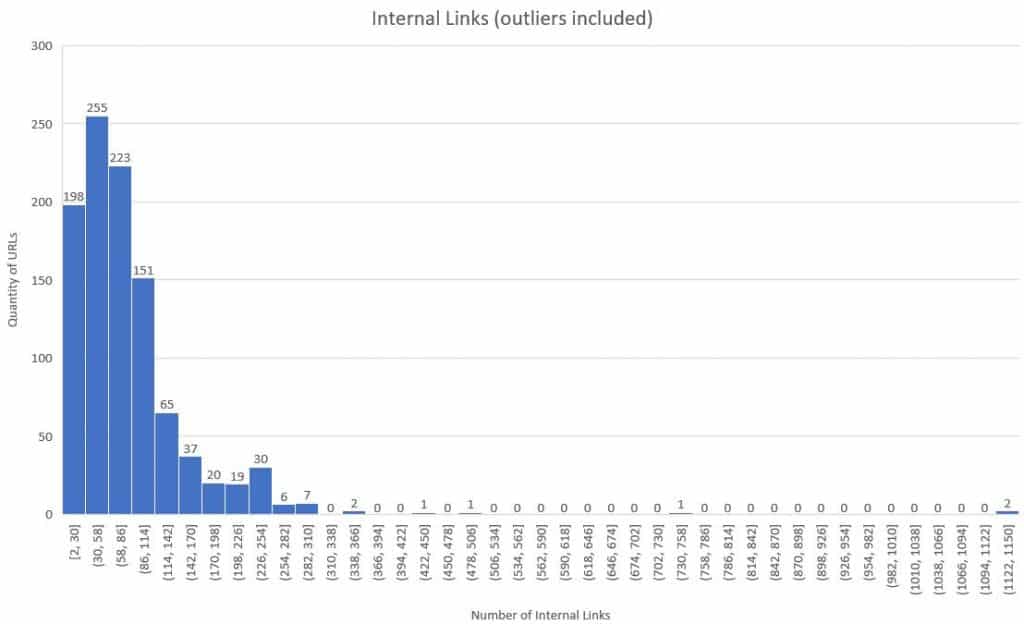For quite some time, it’s been understood that while internal links are important for SEO, having too many can have a negative impact.
This stems from Matt Cutts of Google saying that more than 100 internal links on a given page is too many. They went as far as stating that if you have more than 100 internal links on a page, “Google might choose not to follow or to index all those links” and that you would be “dividing the PageRank of that page between hundreds of links”.
Those are strong statements, so it’s no surprise that the 100 internal link limit rule of thumb has persisted over the years. But should webmasters still follow those guidelines?
That post was from 2009 – a lifetime ago in the SEO world. Google has since dropped those recommendations from their Google Search Central documentation, and they no longer place a specific number on how many internal links is too many.
It’s also wildly understood that removing internal or external links for the purpose of increasing PageRank to higher priority pages may have worked in the past, but it is not an effective SEO strategy in 2021.
I thought it would be interesting to run a quick experiment to answer a few basic questions about internal links:
- Is it possible for webpages with more than 100 internal links to rank well for competitive keywords?
- For webpages that rank well for competitive keywords, how many internal links do they have on average?
- Should we continue to follow the 100 internal link rule established by Google?
To determine the average number of internal links on websites that are excelling at SEO, I followed the following process for gathering the data:
- Gathered a list of 150 highly competitive keywords. I did this with the help of Hubspot, which has a list of 150 of the most expensive keywords on Google by industry. This also allowed me to gather a diverse list of URLs from competitive industries.
- Scraped webpages that are ranking in the top 10 results, aka ranking on the first page of Google for very competitive keywords.
- Used Majestic data to determine the total number of internal links for each webpage.
I excluded youtube.com results from the data, and for many SERPs Google did not display 10 organic results on the first page. Additionally, Majestic did not have internal link data in its index for all URLs. All in all, this resulted in internal link data for 1018 unique URLs. You can view the data here.
Using a box and whisker plot, I determined that URLs with 194 or higher internal links were considered statistical outliers. This amounted to 76 URLs, or 7.5% of the total. Below are two histograms – one with outliers included and one without (for visual purposes).


Highlights from the data:
- The mean (average) number of internal links was: 81.6
- The median number of internal links was: 66
- The mode (most common number) of internal links was: 90
- 16.6% of the websites sampled had more than 100 internal links (83.4% had 100 or fewer)
Key takeaways:
- Google will rank sites with over 100 internal links for competitive keywords.
- The majority of sites that rank well have under 100 internal links, but it’s not an overwhelming majority.
- There is a noticeable drop-off for webpages with internal links in the 86-100 range vs. 100-114 range. It is possible that many website owners are well aware of the 100 internal link limit rule.
- This is not a representation of internal links for all websites on the internet. Just a relatively small sample of webpages that do well for competitive search queries.
- This is not a holistic analysis of a site’s SEO performance – only a snapshot of single pages for single keywords. Just because one page is doing well does not necessarily mean that other pages across the site are performing well for competitive search queries.
Should we still keep internal links under 100?
So, the big question: Should we continue to follow the 100 internal link limit rule, or abandon it altogether? The data clearly shows that it is possible for webpages with more than 100 internal links to rank well in Google. But at the same time, most websites that appear on the first page have fewer than 100 internal links.
In my opinion, the data is far from conclusive and the question of how many links should be on a page should be less about SEO and more about user experience.
If increasing internal links from 90 to 120 makes sense from a website usability standpoint, then it should be done. But if it’s solely based on trying to send link juice to more pages, then it may not be a good idea. At the same time, it’s not a good idea to cut back on internal links from 120 to 90 if it means limiting the usability of your website.
The 100 internal link rule still has relevancy in 2021, but only as a general guideline. If pages on your website have more than 100 internal links, it certainly is not a red flag. But you should ask yourself if it is set up that way for user experience purposes or for distributing link equity to as many pages as possible.

Leave a Reply